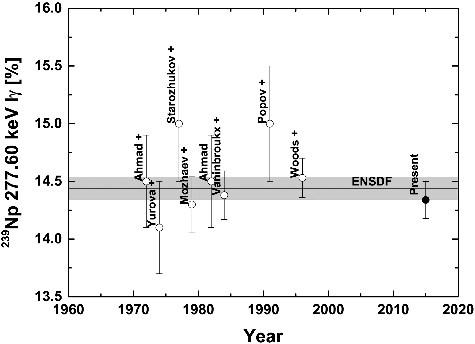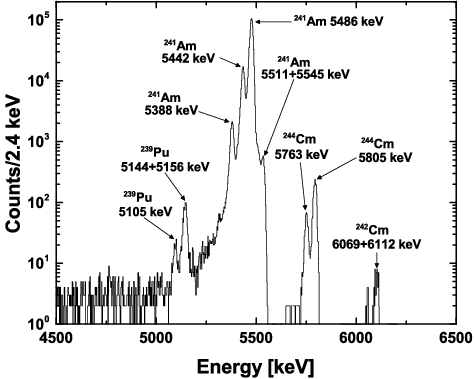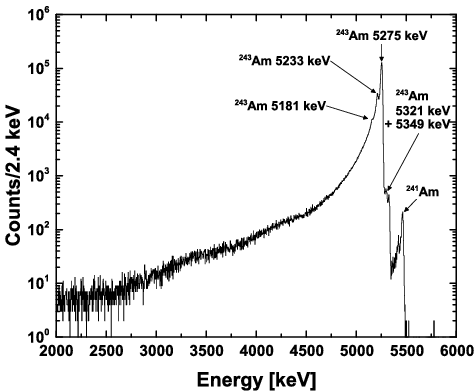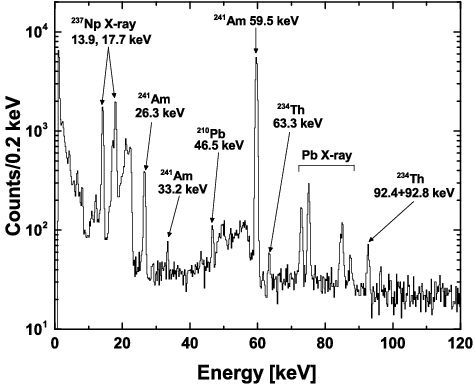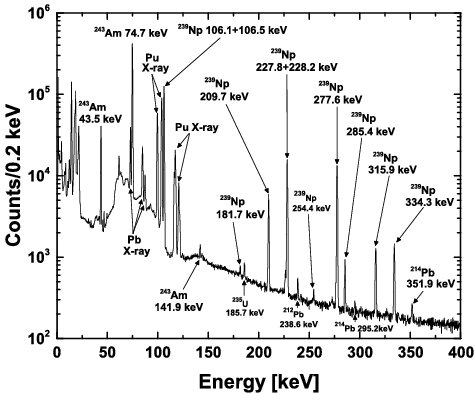Figures & data
Figure 1. Simplified decay scheme of 241Am. Alpha-ray energies and intensities are described [Citation30].
![Figure 1. Simplified decay scheme of 241Am. Alpha-ray energies and intensities are described [Citation30].](/cms/asset/26b0e03e-654f-492f-aa2b-e7c2a23f5ab7/tnst_a_1174167_f0001_b.gif)
Figure 3. Simplified decay scheme of 243Am. Alpha-ray energies and intensities are described. Transition intensities by beta minus decay are also shown [Citation30].
![Figure 3. Simplified decay scheme of 243Am. Alpha-ray energies and intensities are described. Transition intensities by beta minus decay are also shown [Citation30].](/cms/asset/75c6c115-420b-48fa-bb6f-60c266ba95ab/tnst_a_1174167_f0003_b.gif)
Figure 7. The full-energy-peak efficiency is plotted in the top figure (a). The filled points show measured efficiencies using the standard sources of 60Co and 133Ba at a source distance of 20.0 cm. The solid line indicates the calculated efficiencies from the Monte Carlo calculation. Differences between the measured efficiencies and the calculated values using the PHITS are compared in the bottom figure (b). Open circles represents the data obtained by using the 137Cs source, which were normalized to unity at 662 keV. The estimated uncertainties of the efficiency curve were shown by the gray area in the figure.
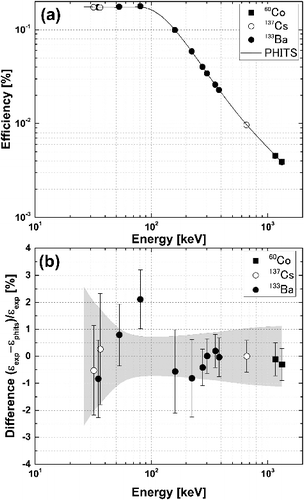
Figure 8. Geometry of the HPGe detector in the PHITS calculations. The upper half of the detector is illustrated in the figure.
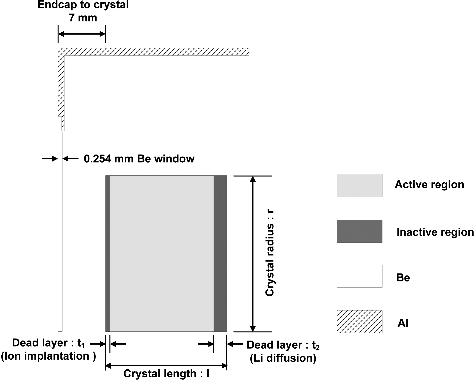
Table 1. Parameters of the HPGe detector. Specifications by the manufacturer are compared with the PHITS calculations. Uncertainties of these parameters estimated by the PHITS calculations are shown.
Table 2. Gamma-ray emission probabilities of 241Am.
Table 3. Gamma-ray emission probabilities of 243Am.
Table 4. Gamma-ray emission probabilities of 239Np.
Table 5. Details of uncertainties for the gamma-ray emission probabilities of 243Am.
Figure 9. Comparison of the gamma-ray emission probabilities of 59.54 keV of 241Am in chronological order. The gray area indicates the uncertainty of the evaluated value of ENSDF.
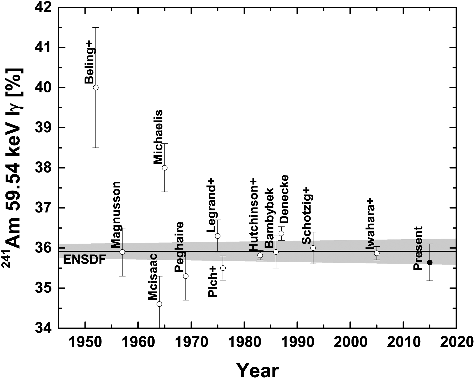
Figure 10. Comparison of the gamma-ray emission probabilities of 74.66 keV of 243Am in chronological order. The gray area indicates the uncertainty of the evaluated value of ENSDF.
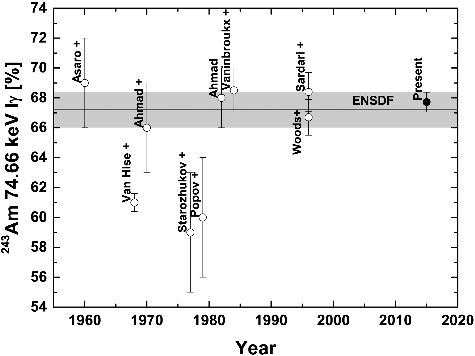
Figure 11. Comparison of the gamma-ray emission probabilities of 277.60 keV of 239Np in chronological order. The gray area indicates the uncertainty of the evaluated value of ENSDF.
